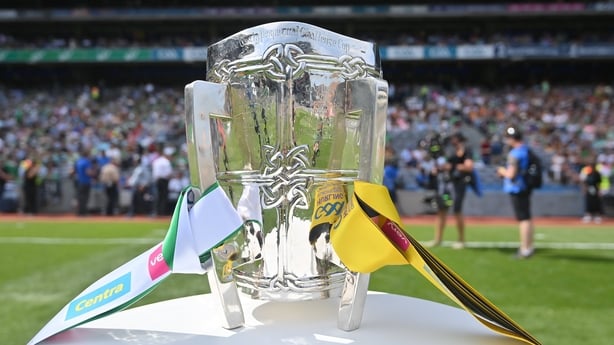The passing of one year and the birth of another is generally a good time for reflection and resolution.
And given human nature's love for a good round number, 100 is a nice figure to lean on to cast an eye back in time.
2023 holds plenty of promise for Irish teams and sportspeople, not least Andy Farrell's Ireland at the Rugby World Cup and Vera Pauw's tigers who hope to be roaring in Australia next summer at the FIFA Women's World Cup.
That maiden major tournament appearance for an Irish women's senior side will coincide with the 100th anniversary of the Football Association of Ireland joining FIFA.
It was August 1923 that the sport's governing body accepted the application from what was then known as the FAIFS (Football Association of the Irish Free State) which itself had been founded two years previously.
While the FAI was getting itself established internationally, domestic competition had been ongoing that year with the second FAI Cup final on St Patrick's Day 1923.
That saw a Dalymount Park attendance of almost 15,000 witness Belfast-based - specifically the Falls District League - and FAI but not IFA-affiliated Alton United stun Shelbourne 1-0.
Shels would also end up runners-up in the nascent League of Ireland which saw its second season run from September 1922 all the way to the following March.
Just like 2022, Shamrock Rovers would end up champions, albeit 1922-23 was the first of what has become, as of the year just gone, 20 league triumphs. The goals of the prolific Ringsend native and - briefly - future Irish international Bob Fullam would prove instrumental.
Aside from the Hoops and Shels, Bohemians and Athlone Town are the only other clubs from that 12-team campaign who are still operating in either the Premier or First Divisions.
Those early months of 1923 also marked the final throes of the Civil War, which had also impacted the GAA.

Consequently, the 1921 and 1922 All-Ireland Football and Hurling championships were not completed until 1923.
In the space of four months during the summer and autumn of '23, Dublin's footballers - represented respectively by the St Mary's and O'Toole's clubs - claimed the first two parts of a three-in-a-row at Croke Park, beating Mayo in June to secure the 1921 honours and then following it up with the 1922 title that October against Galway.
Dublin would also win the 1923 Leinster championship between those two national finals, but the All-Ireland decider for that edition would not be played until the following year.
Similarly in hurling, '21 and '22 were ultimately decided in '23, with Limerick scoring 8-5 in a comprehensive victory over the Dubs for the first of those in March.
It also happened to be the first final after which the Liam MacCarthy Cup trophy was awarded with Limerick the first to get their hands on that particularly fabled piece of silverware and about a century on the current crop of hurlers from that neck of the woods aren't doing too badly are they?
Six months later, Kilkenny overcame Tipperary for the 1922 championship, which marked their eighth All-Ireland hurling title and last for ten years.
It was also a decade in which the Irish rugby team would gradually enjoy better fortunes but in 1923 that relative success had yet to arrive.
That year's Five Nations Championship saw Ireland finish bottom of the standings with one narrow home win against Wales but defeats to Scotland, England and France, the latter two of which came on the road.
When 2023 dawns with the Six Nations, it will be the English and the French coming to Dublin instead but more pertinently rather than bookending a table, Ireland go into a World Cup year top of the global rankings. A lot can change in 100 years.


